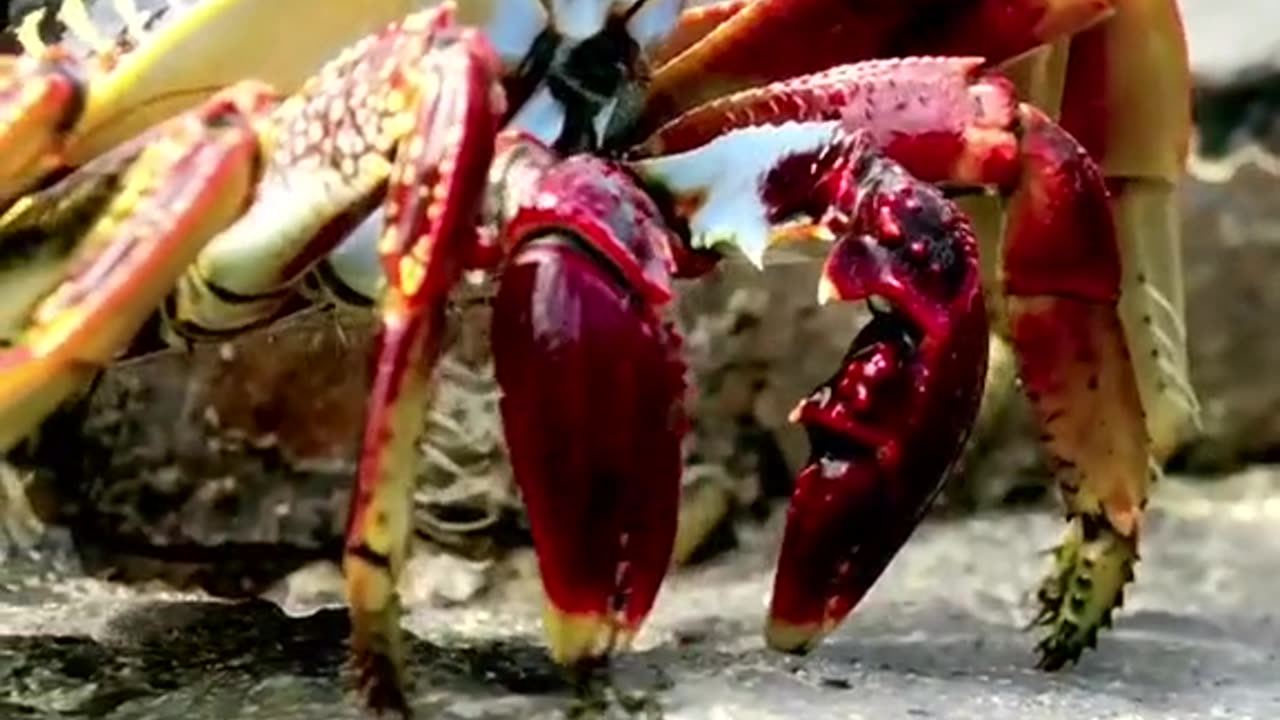Premium Only Content

Crab
The crab is a crustacean that belongs to the order Decapoda, which means "ten-legged." It is characterized by its hard exoskeleton, segmented body, and two sets of antennae. Here are some key characteristics and descriptions of crabs:
1. Appearance: Crabs have a rounded body with a hard, outer shell called a carapace that protects their soft internal organs. They have ten legs, with the front pair modified into pincers or claws, and their rear legs specialized for swimming or walking. The size and shape of crabs can vary greatly, with some species being small and others reaching impressive sizes.
2. Size: Crabs come in various sizes, with the smallest species measuring just a few millimeters in width, while larger species can have a leg span of several feet. The size of a crab is often influenced by its species and habitat.
3. Habitat: Crabs can be found in various marine, freshwater, and terrestrial environments worldwide. Marine crabs are commonly found in coastal areas, tidal zones, and ocean floors. Some crabs are adapted to live in freshwater habitats such as rivers, lakes, or swamps. Terrestrial crabs, like land hermit crabs, live on land but still need access to moisture.
4. Behavior: Crabs are known for their sideways walk, achieved by moving their legs in a scuttling motion. They are generally more active during nighttime and tend to hide during the day to avoid predators and conserve moisture. Crabs are scavengers and omnivores, feeding on a varied diet that can include algae, small fish, mollusks, dead organisms, and even detritus.
5. Reproduction: Most crabs reproduce sexually, and males typically search for females during the breeding season. After mating, the female carries fertilized eggs attached to her abdomen until they hatch. Some species release their eggs into the water, while others keep them attached until the larvae are ready to be released.
6. Defense mechanisms: Crabs have evolved different defense mechanisms to protect themselves. Some species have sharp pincers that they use for defense and capturing prey. Others have protective spines or thorny projections on their shells to deter predators. Many crabs are also capable of quickly regenerating lost limbs.
7. Economic and ecological significance: Crabs are not only important components of marine and freshwater ecosystems but are also valued economically. They are harvested for food and other commercial purposes, such as in the fishing industry. Many species of crabs are also popular as pets or kept in aquariums.
It's worth noting that there is a wide diversity of crab species, each with its unique characteristics and adaptations. Therefore, specific details may vary depending on the particular species of crab being discussed.
-
 12:19
12:19
T-SPLY
5 hours agoDemocrats Start Economic War With El Salvador!
8925 -
 13:42
13:42
SantaSurfing
4 hours ago4/24/2025 - Part 1 on Endless Frontiers Efficient & Powerful Tesla Homes! Revolutionary!
4.97K12 -
 LIVE
LIVE
TheTapeLibrary
9 hours agoThe Disturbing Case of the Becker Haunting (FULL PARANORMAL DOCUMENTARY)
80 watching -
 LIVE
LIVE
Quite Frankly
4 hours ago"Op Sea Spray, Assassination Files, MK-Internet" ft. Eric Hunley 4/24/25
328 watching -
 LIVE
LIVE
LFA TV
7 hours agoAmerica’s Shameful Foreign Policy | TRUMEPT DAILY 4.24.25 7PM
90 watching -
 1:25:56
1:25:56
vivafrei
5 hours agoJudge Cano BANNED from the Bench! Is That the COVER-UP? Tariffs, Trans in Military & Fall of Canada!
72.1K30 -
 47:49
47:49
Candace Show Podcast
2 hours agoShannon Sharpe Out At ESPN. I Taylor Swift Subpoena Incoming. | Candace Ep 182
38.8K59 -
 1:12:48
1:12:48
Ark of Grace Ministries
8 hours agoProphecy Fulfilling The Pope Has Passed Over & A Great Shaking In The Earth
23.4K11 -
 LIVE
LIVE
Spartan (Pro Halo esports Player)
3 hours agoSdcrims no comms, then College match
98 watching -
 36:41
36:41
Kimberly Guilfoyle
3 hours agoBorder Security is National Security, Interview with Tyler O'Neil | Ep216
49.2K8